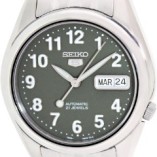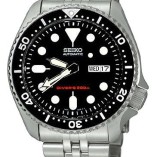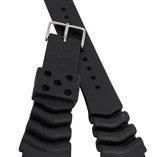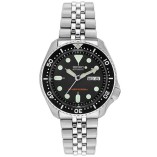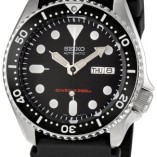A Brief History of Military Watches
Military watches, as their name suggests, were developed for use in the armed forces. The first military watches were naval pieces, chronometers that worked well for their purposes, but as other branches of the military – aviation in particular – made major technological advances around the time of the Second World War, precise seconds became critical. As the saying goes, “necessity is the mother of invention,” and Navigator (also known as “Pilot”) watches were born.
In Navigator watch design, the seconds bezel allowed the pilot to synchronize the seconds hand with correct reference time before takeoff, and to make manual corrections to radio time signals while in flight, thus eliminating any “chronometer error” and the navigational errors that could result.
Great War, Great Technological Advances
Seconds continued to be of the essence in both military technology and military watches. “Center-seconds” hands, (also called a “hack seconds feature”) – the feature that allowed for synchronization between two timepieces – continued to improve and advance.
The definitive Navigator “hack” watches feature a black dial and white Arabic numerals and indices, hour, minute, and center-seconds hands. Sizing is all over the board; historically, such notable companies as Elgin, Waltham, and Bulova Watches crafted watches (for the renamed Army Air Force in 1941), as small as 31mm in diameter. The German army tended toward larger faces, often in the 55mm range. These watches were worn on the outside of a flight jacket or on the navigator’s thigh. The Germans also added antimagnetic protection to their chronometers.
Within another major Axis power, Seiko produced a staggering number of military watches for the Japanese Imperial Army and Navy. These watches averaged around 49mm in diameter.
Navigating The Cold War
As the days of WWII faded into memory and the strained peace of the “Cold War” became reality, military budgets and military technology boomed. In the era of nuclear bombs the airplane ascended to its most powerful military and political role in history. Watchmakers rose to the call by designing an instrument worthy of going into battle with humankind’s most powerful weapon. Those were the Glory Days of the military watch, although no one design house can claim full credit for the strides made in the industry during that time.
Cold War-era military watches were much larger in size than the average American navigators before them. Averaging 36mm in diameter, the crafting of these timepieces was moved to Switzerland and Swiss military watch companies with centuries’ old reputations for precision. Like those before them, these Navigators also featured a matte black dial marked with white Arabic numerals 1-12, and with white indices. The new designs did not have white numerals at cardinal 3, 6, 9, and 12. Another new addition was a shatterproof Perspex acrylic crystal, which protected its large 12 ligne movement from magnetic fields. These hand-wound watches were expected to be water-resistant to 20 feet, including water-resistance under low-pressure at operational altitudes.
Own A Piece of History – At A Reasonable Price
While several of the top-tier watchmakers are reviving this classic style, vintage quality does not have to break the bank. A Military Watch Company MWC watch can be purchased for under £70.00.
Alternatively if you are seeking a practical tough watch the Casio G-Shock is the watch of choice for many Military Personal in the UK when purchasing at watch for active service, these start from around £50.00.
Diving watches are more expensive and are a complete subject in themselves. Further details can be found here.
You can check out this : Divers Watch History

